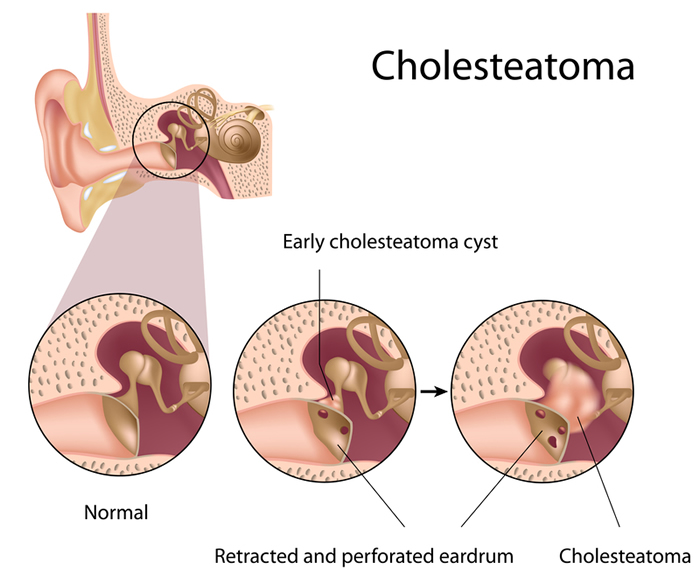
Causes and Treatments: Cholesteatomas
Often contributing to middle-ear infections, a cholesteatoma is a non-cancerous skin growth that can develop behind the eardrum in the middle ear and behind the ear canal in the mastoid bone. Usually starting as a small cyst, the growth may become larger over time. If you are experiencing increased instances of ear infections that don't respond to medications and other common treatments, you may be referred to an ear, nose and throat doctor (ENT) to determine if you have a cholesteatoma.
Causes of a Cholesteatoma
A poorly functioning Eustachian tube, which allows air to travel from the back of your nose to your middle ear to equalize pressure, is the most common cause of a cholesteatoma. Sometimes, the cholesteatoma forms from growth of skin from the outside of the ear drum through a hole in the ear drum into the middle ear space. Since the cholesteatoma is lined by skin and skin makes new skin and sheds the dead skin, the dead skin accumulates in the ear. This dead skin is great bacteria food and gets infected. Once a cholesteatoma gets infected, it is difficult to cure it and it also causes continued growth of the cholesteatoma. Uncommonly, cholesteatoma sometimes be congenital and the result of a birth defect.
Signs You May Have a Cholesteatoma
In addition to causing recurrent drainage from the ear the growth that results from a cholesteatoma may also cause a pressure or plugging sensation and affect your hearing and balance. Your facial muscles can rarely also be affected, depending on where the cholesteatoma places pressure. Symptoms associated with the growth are often mild at first and become increasingly noticeable as the cyst grows within your middle ear or mastoid. As this happens, you may experience:
- An odorous fluid draining from your ear
- A sense of pressure in your ear
- Hearing loss in the affected ear
Rarely, cholesteatoma can destroy the bone between the brain and the ear and cause an infection around the coverings of the brain.
Treating a Cholesteatoma
After an examination confirms the presence of a cholesteatoma, usually involving a CT scan, treatment typically includes a thorough cleaning of your ear, antibiotics, and ear drops if you have an ongoing infection that is being caused by the growth. Treatment of cholesteatoma is removal of the cholesteatoma and surgical reconstruction of the hearing and ear drum. Rarely, in elderly patients with limited cholesteatomas, observation may be done.
Surgery for a Cholesteatoma
Cholesteatomas need to be removed in a vast majority of patients. The hearing bones are reconstructed and the areas of the ear drum and mastoid are reconstructed to prevent cholesteatoma formation in the future.
If left untreated, a cholesteatoma may contribute to a wide range of hearing, balance, and severe infection issues. If you have a history of ear infections, your ENT doctor may evaluate you further to determine if there are additional sources of your pain. If you need surgery for removal of the cholesteatoma, it is best performed by an ear subspecialist (otologist / neurotologist).

